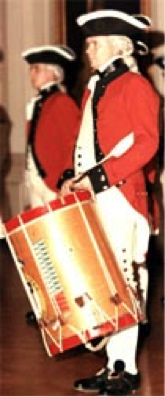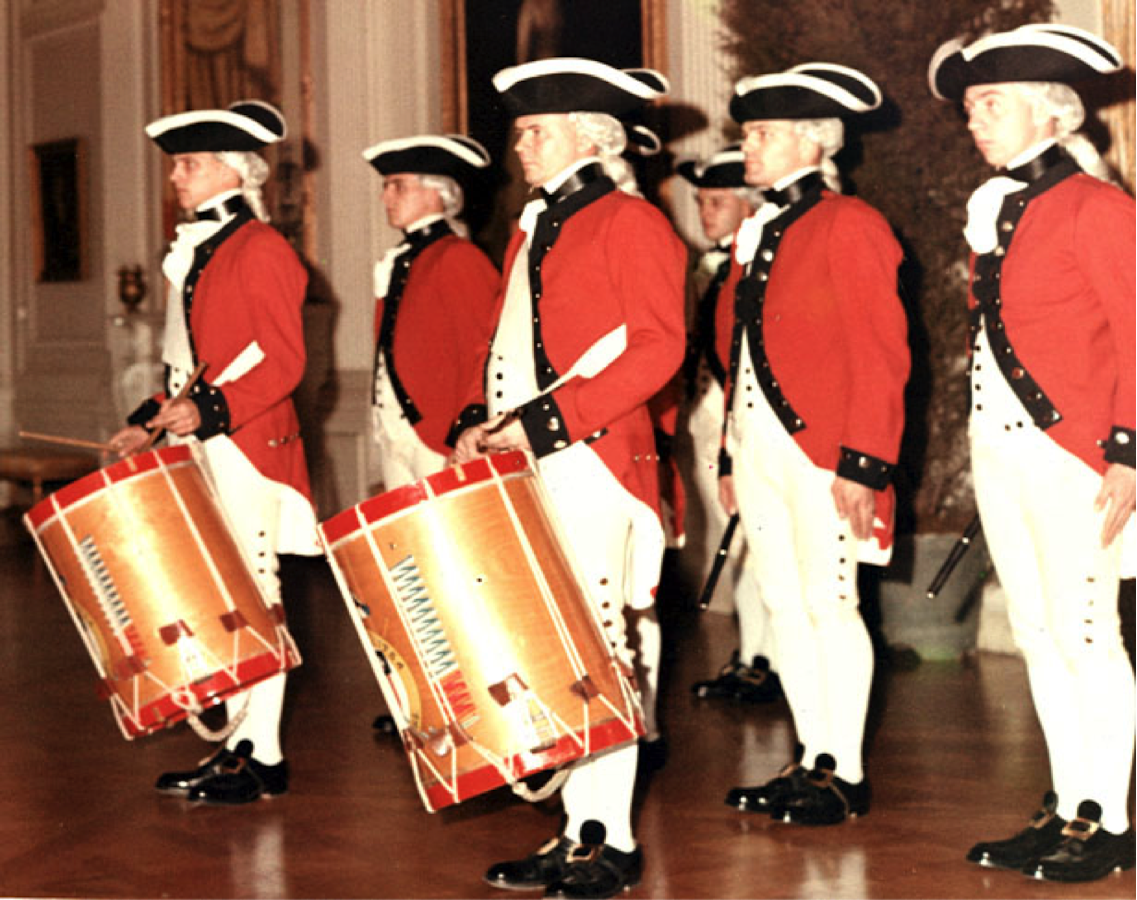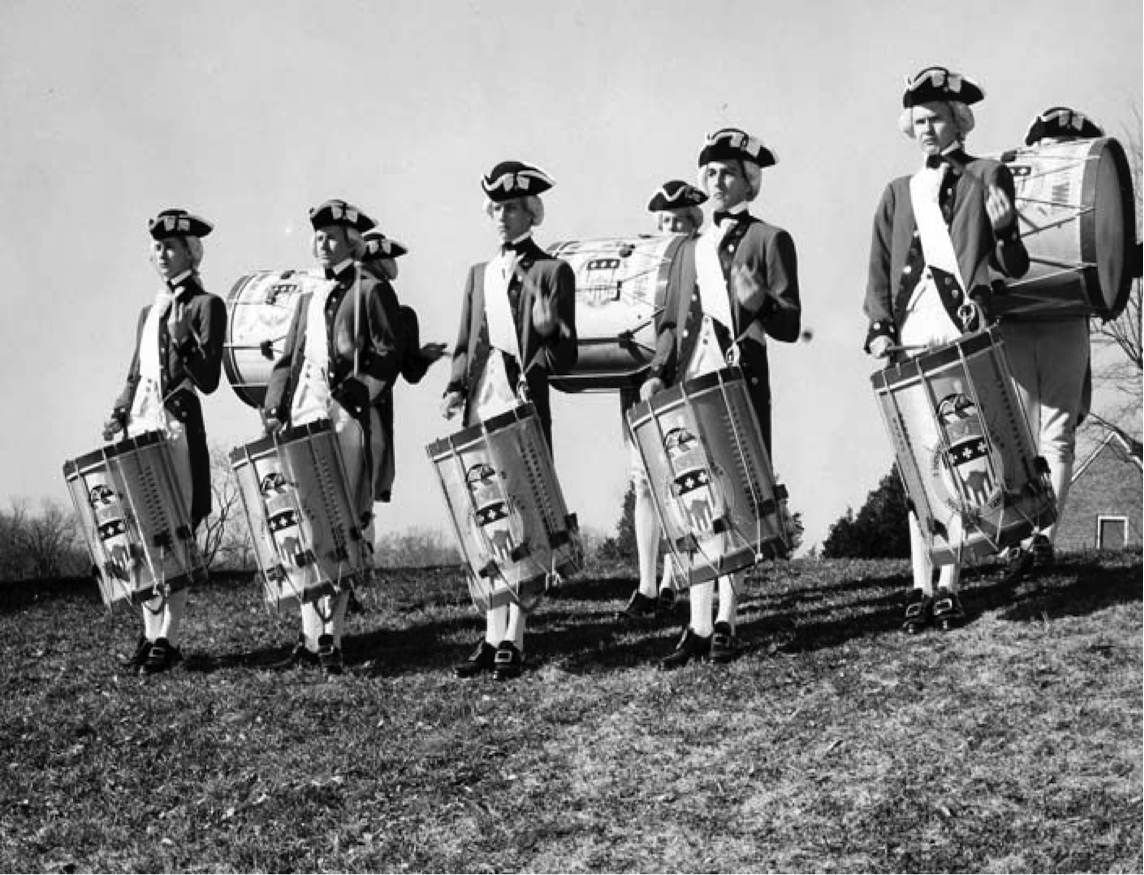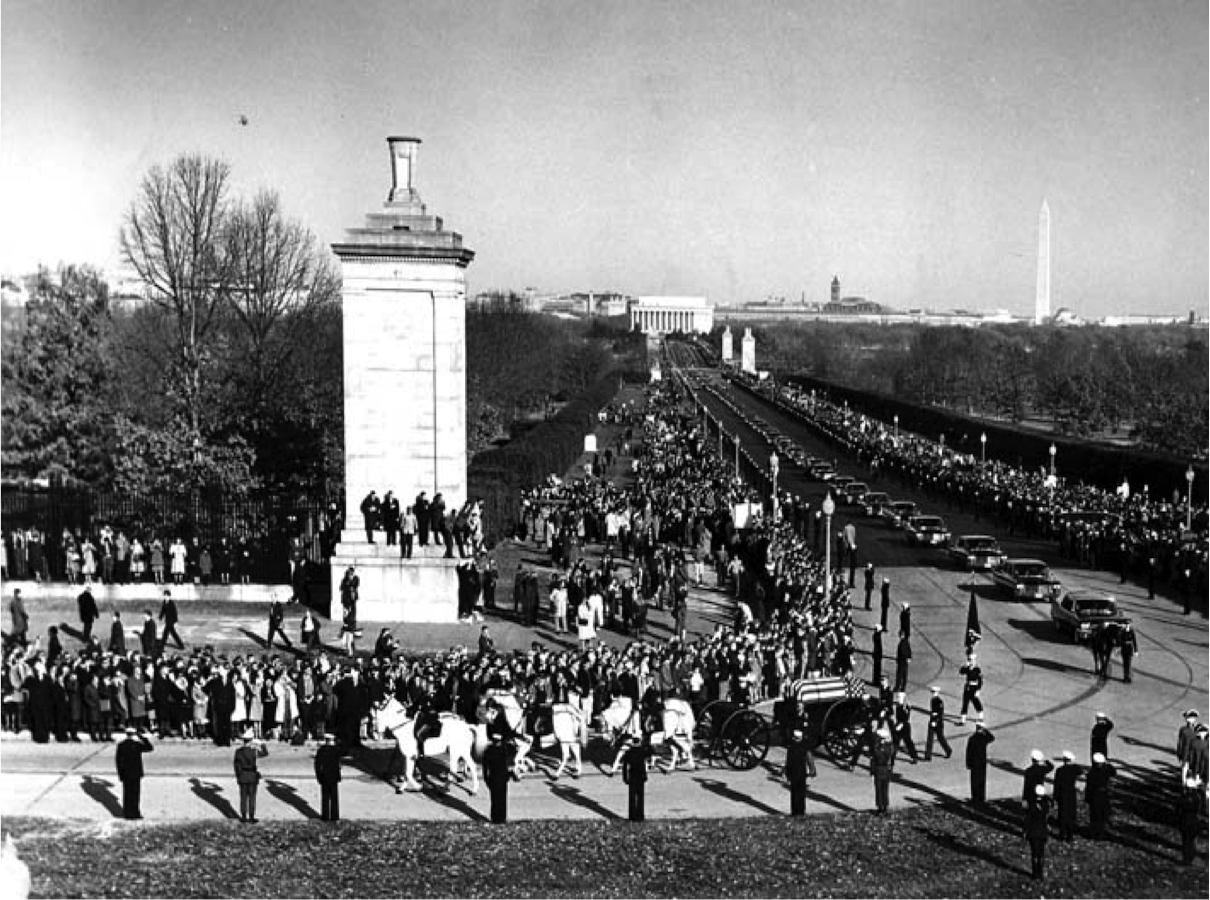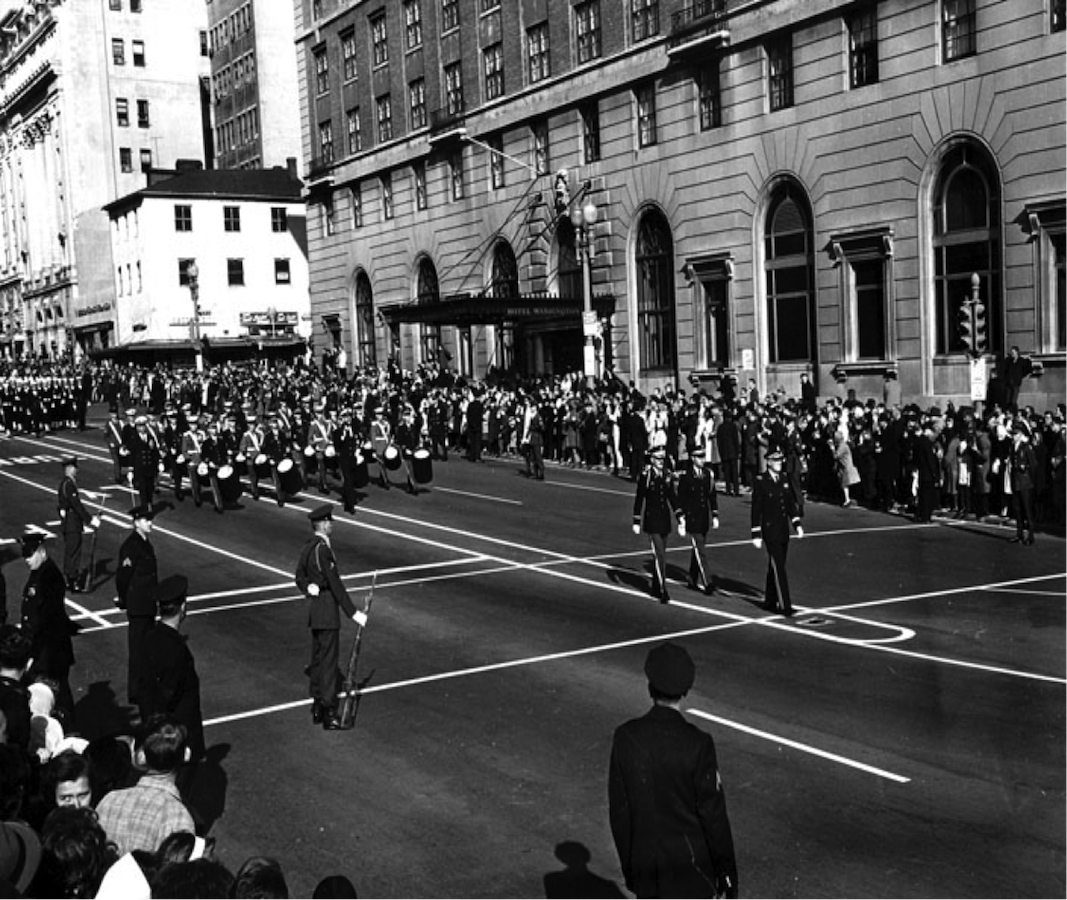While the world continues to adjust from the horrors of September 11, 2001, another event that occurred 56 years ago also had a profound impact that was felt around the world. We will always remember where we were and what we were doing when the Twin Towers were attacked, but on November 22, 1963, the whole world watched in horror and disbelief as they witnessed the assassination of John F. Kennedy in Dallas, Texas. This author was in elementary school at the time, but my guest was a participant in this world-changing event. This interview will attempt to capture the event through the eyes of someone who had the privilege and honor of being included in the funeral and processions that followed in Washington, D.C. This account by Mr. Bob Parker is the first that has been documented with regards to the musical personnel that were involved and some of the behind the scenes events that occurred during those fateful 4 days. I want to introduce my special guest, Mr. Bob Parker...
C.G. - When did you enlist in the armed services?
B.P. - I belonged to the St. Andrews Fife & Drum Corp in Baltimore and I found out that I was going to be drafted along with several other friends that were also in the drum corp. My drum teacher at the time took the initiative and lined up auditions for several of us in the different bands of the Armed Services. I auditioned for a couple but settled for the Army Band because the term of enlistment was only 3 years.
C.G. - How did you get involved with the Old Guard Fife & Drum Corp? B.P. - The Army Band had several different units assigned to the Washington Post. One of them was the Old Guard Fife & Drum Corp. This unit was started as a request by President Kennedy in 1961, who wanted a group who looked like the original Colonial guards and who would perform at different official events.
The group belonged to the 1st Infantry, 3rd Regiment, stationed at Ft. Myer in Washington. They had just finished forming the group after I passed basic training and I went to one their performances. I introduced myself and said that I would be interested in joining their outfit. They looked at this kid and said, “You want to audition? Think you could cut it? Okay, come on!”. We walked to their bus, which was parked by the Silverman Theater by the Washington Monument and they led me to the rear of the bus. They took out a practice pad and handed me a pair of 3s sticks and said, “Play Connecticut Halftime”. Since I had been in drum corps, I knew all the classic rudimental pieces, so after I finished, there was a pause, and someone yelled out, “Sign Him!” I have got to say that it was a situation of being in the right place and being able to deliver, which led to my position in corp.
C.G. - How big was the Old Army Fife & Drum Corp?
B.P. - When I joined the outfit, they had 6 Snares, 2 Bass drums, 1 Cymbal, 16 Fifers and 12 Buglers. It was a pretty good size group for its time, but the current group in Washington now boasts over 70 players! We only had a repertoire of approximately 11 tunes. They now have a musical library that is just dedicated to the Old Fife & Drum Corp.
C.G. - How many people remain alive today that you know of?
B.P. - Unfortunately, not that many. I think out of the original group, 10-l 5 have passed away. We still have reunions in various cities so out brotherhood continues to this day.
C.G. - Let’s go back to the fateful day. Where were you when you received the news?
B.P. - I was in the public information office where I was also assigned as a lettering artist. I designed a lot of the plaques that were presented to dignitaries. Suddenly, someone rushed in and said that the President had been shot. At first, we dismissed it, but the leader of our unit, Harry Danner went upstairs to check with his office. When he returned and with one look, I could tell it was true. I immediately went to our files and took a lot of the photos that were kept of the President for information and press purposes. I only took photos that meant something to me and placed them in my desk. I was glad that I did this because shortly thereafter, there were Generals and Colonels swarming all over the files! Some of the photos that appear in this interview were a few that were taken that first day.
C.G. - What Kind of preparations were discussed and how fast did this come together?
B.P. - Everyone was put on alert and calls were made to people that were off the base on leave to return. What I always remember that for the next 3-4 days it was a constant state of movement by our unit. We immediately started planning for the funeral and preparations were started to receive the plane when it returned from Dallas. The Head Drummer for our unit started contacting all the various musical units and he also started working on the drum cadence that was to be used in the procession. The Army went out and bought 25 yards of black bunting material and gave me the assignment to put together the shrouds that would cover the drums.
C.G. - You were present at the airport?
B.P.- Yes, we were sent to the airport to receive Air Force One, but we did not play. I still have a picture taken of that day that shows the casket being placed into the hearse and President Lyndon Johnson standing at attention with the other dignitaries. You can also spot several Secret Service agents on the roof of the hangers.
C.G.- How many funeral processions did you perform at?
B.P. - There were two funeral processions. The President was taken from the White House and moved to the Capital to lie in State for public mourning. We marched right behind the caisson [See Figure 5- Bob is in the second row] as it left the White House and we played for the main procession as it entered the cemetery. Our barracks were situated next to the entrance of Arlington Cemetery, so we marched down and performed for the procession as it was coming across Memorial Bridge [See Figure 3- we are stationed at the lower right] and into the cemetery. We were lucky that we pulled that position because had we marched we would have never been seen. I knew of units that marched that were stepping off at the White House as the front of the funeral was entering the cemetery! The entire procession was at least 3-4 miles long and the marching units were placed behind the official vehicles.
C.G. - What do you remember of the Secret Service and their involvement in the funeral?
B.P. - Because of the nature of our work we had Top Secret security clearance and due to my position at the Public information Office I had Crypto security clearance. Crypto clearance is rare because it is above Top Secret, but I had gone to a special school and retained the clearance. Since we had that clearance we were left alone but I remember that during the funeral we could detect voices and movement throughout the procession as each Heads of State were approaching. The combination of the mood and the voices made for an eerie feeling in the area where we were standing. You can also see in the pictures [See Figure 3] that there were police everywhere, but you did not see the Secret Service. Shortly after that picture was taken the Secret Service stopped all the vehicles and had the occupants walk into the cemetery. They had to do this because the cemetery could not accommodate all the cars!
C.G. - Describe what you played during the funeral?
B.P. - The only drum pattern that was played during the entire 3-4 days was a cadence that our Head Drummer came up with. It was a simple pattern as a way for all the drummers that participated could learn in a short amount of time. The pattern was Flam, Flam, Flam, 7 Stroke Roll-Flam, Flam, Flam, 7 Stroke Roll- Flam, Flam, Flam, 7 Stroke Roll - Flam, Flam, Flam Tap! The drums were covered in that shroud that my mother had sewn, and the snares were turned off. This cadence was played at a very slow tempo [approx. 78 B.P.M.] using 3s sticks. One interesting side note was that only Drummers participated in the funeral. There were no other instruments used during the entire 3-4 days of ceremonies! Quite an honor!
C.G. - How long did you play that cadence on the day of the funeral?
B.P. - We started playing that as soon as we got into position at the entrance and finished about 2 hours later! There were no breaks either! [Try playing that pattern at home for 10 minutes without stopping and you will see the magnitude of effort this took! Bob also was at attention in full uniform!]
C.G. - What was your most poignant memory of that day?
B.P. - Without a doubt was the 50 Gun Salute during the funeral service. We had been dismissed and were resting in our barracks when they started with the cannon volley. BOOM.!....... BOOM! . . . . . . . . .BOOM ’ ! ......... Since our barracks were so close..[ His voice trails off as his voice starts to break] I still get emotional over that. We just looked at each other in silence and shook our heads.
C.G. - What other incidents do you remember from that period?
B.P. - Here’s something that is not known that involved our Base Captain. You can’t imagine the stress to everyone involved that had something to do in the funeral. We all realized that the entire world was watching our every movement so everything had to be executed perfectly. The Commander of our Base oversaw the entire funeral but delegated a large amount of details to our Captain. He abruptly died 2 weeks after the funeral of a heart attack and doctors stated that the stress of the funeral preparation was a major factor in causing the attack.
C.G. - What were you able to keep from the Corp?
B.P. -1 kept the black shroud that I had used on my drum, the black ebony 3s sticks that I used and the tucking tool that we used for our heads. I still have all the photos, which I intend to put together into a display along with the items that I mentioned. Uncle Sam kept the rest!
C.G. - What kind of drums were used in the Old Guard Fife & Drum Corp?
B.P. - The drums were custom made for the unit by Charles [Buck] Soistman of the Roland Drum Shop of Baltimore. They were tensioned by ropes, which we restrung every time we changed the heads. The drums were tuned by pulling down on the leather ears [See Figure l] that were attached to the rope. This action caused both heads to tighten at the same time. When you first replaced the heads, the ears would come down about a quarter to half way down on the drum but as the head stretched you pulled on the ears to tighten the tension. This system worked great because you could also tell by the position of the ears when you had to replace the head! We tucked our own heads and did our own up-keep, so we were our own techs! Charles’ Great Grandfather made drums for the corps in the Civil War, so he had a great linage in his blood. Charles Soistman was renowned for his drums and one of them is displayed in the Smithsonian Museum in Washington.
C.G. - Can you describe the action and sound of the drums that you played?
B.P. - The drums were a joy to play but despite the size of them [See Figure l] they were not heavy. They were equipped with calfskin heads and thick gut wire snares, which produced a tremendous sound when all the drummers played in unison. [Click on the Sound Bite for an example] The drums when they were played were balanced on your knee, so we learned thru practice how to march and play without the drum bouncing out of control.
C.G. -Any last words or memories?
B.P. I remember one incident that was very memorable to me. We always did a special show on the White House lawn for the winners of the Congressional Medal of Honor. We came marching up and by luck or fate I ended up 4 feet directly in front of President Kennedy. I also remember that his brothers Ted and Bobby were also standing next to him. The President watched with his hands in his coat pockets as we launched into “The Downfall of Paris”. I was trying to be extra sharp with my stick movements when during a hard passage, I came up and “BAMM!” hit myself in the forehead with my 3s stick! President Kennedy quickly took one of his hands out of his pocket and covered his mouth, so I would not see that he was laughing! I felt my ears turning fire engine red and my eyes starting to water from the pain, but I kept playing!
I also remember playing for Caroline’s 6th birthday party and meeting many dignitaries during my time in the corp. I enjoyed that period in my life. I was playing 10 to 12 hours a day- 6 to 7 days a week and loving it! I almost reenlisted but I decided to pursue a life out of the military. The Old Guard Fife & Drum Corp is still regarded as one of the top units in the military. I was proud to be among one of the original members.
C.G. - I want to thank Bob Parker and you can address any comments to me at guzmanglobalbeat@aol.com or www.facebook.com/globalbeatdrummer .
About the Author-
Carlos Guzman for the past 19 years has been working as a Production or Tour Manager for many top Artists. He also is a founding member of “The Sessions Panel” which was founded by Jules Follett which travels to leading Colleges & University’s lecturing Students about the Music Business.

